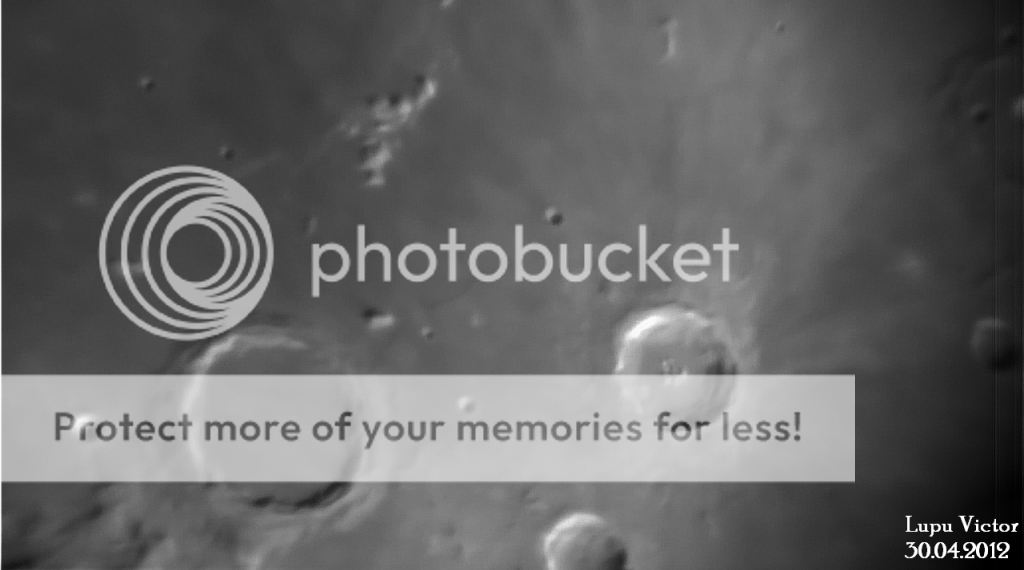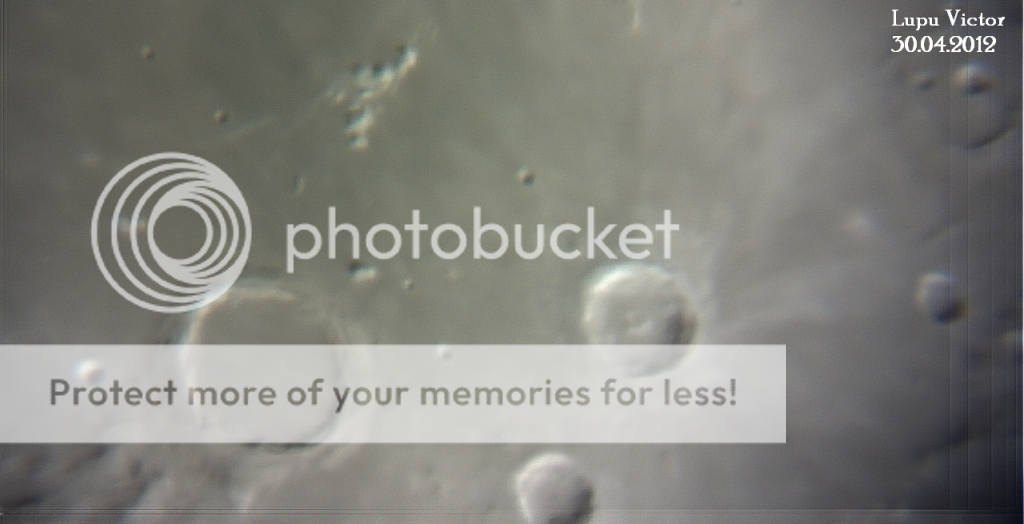 |
| 19 frames, at 90 best quality in Registax. |
 |
| 12 frames, at 90 best quality in Registax. |
If you reached this page, it means that you were interested in the craters of the Moon, or the name of the personalities of these craters: Archimedes, and Autolycus Aristillus.
These beautiful craters located on the eastern Mare Imbrium basin, are easily observed by an 8-inch telescope.
The bigger one, is Archimedes (83 km), a large circular crater, situated on the northern mountains with the same name, but not seen in the image. Around of Archimedes, there are several smaller satellite craters.
The crater is called after Archimedes, a mathematician, physicist, inventor, engineer and astronomer, born in 287 years before Christ.
Note the isolated mountains north of Archimedes. Here are the Montes Spitzbergen and are sectioned to the south. Aristillus and Autolicus, unlike the Archimedes are not flooded. They therefore don't have a smooth floor.
Aristillus (55 km) has several peaks centrally located on the floor and interior walls are nice terraced. This crater shows rays from the impact that caused the crater; albedo rays are more intense in the northeast. This crater has its name from Aristillus, an astronomer has been born 261 years before Christ, being contemporary with Archimedes.
Autolycus (39 km), a smaller crater, located south of Aristillus, has a floor full of low peaks. Autolycus is a name given from Greek mythology, and is translated as "wolf himself." He was the son of Hermes.
Between Archimedes, Montes Spitzbergen and Aristillus with Autolycus is Lacus Lunicus, which is not distinct or clearly delineated, but is an area on Mare Imbrium, which was given this name.
Images are processings in Registax that have taken some shots from a video, merged to form a single image. The first picture is processed black and white and the second is color.
 |
| Image from July 20, 2011. |
Age of the Moon: 8 days
Phase: 62% (0% = New, 100% = full)
Distance: 379.486 km
Optics: Celestron C8-Newtonian telescope, 20mm Plossl, 2x Barlow
Mount: CG5 (EQ5)
Camera: Sony CX130
Filter: no
Date: 30/04/2012
Location: Baia Mare, Romania
Processing: Registax, FastStone Image Viewer




 Wednesday, August 21, 2013
Wednesday, August 21, 2013
 Unknown
Unknown


 Posted in:
Posted in: 


0 comments:
Post a Comment